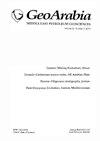阿拉伯板块的二叠纪-三叠纪层序EAGE第三届阿拉伯板块地质研讨会摘要(二)
引用次数: 0
摘要
在伊拉克,上二叠统Chia Zairi组与上覆的下三叠统Mirga Mir组形成了相当于阿拉伯东部的Khuff组和伊朗的Dalan和Kangan组的年代地层。Chia Zairi组从土耳其边境附近的Ora北部露头延伸到伊拉克南部(West Kifil-1和Diwan-1井),从而覆盖了该国的中部和东部。在约旦边境的遥远西部沙漠和叙利亚边境附近的一些地区(即Khelsia高地地区和Jabal Sinjar南部),由于没有沉积或侵蚀,它是没有的。从岩性上看,加载日组为碳酸盐岩和硅屑岩混合组成,且碳酸盐岩比例向北、向东增大。然而,该地层在大多数地区都被深埋,除了西北部和潜在的西南部地区,根据地震,估计深度约为3-5公里。本文章由计算机程序翻译,如有差异,请以英文原文为准。
The Permo–Triassic Sequence of the Arabian Plate Abstracts of the EAGE’s Third Arabian Plate Geology Workshop, Part II
In Iraq the Upper Permian Chia Zairi Formation, together with the overlying Lower Triassic Mirga Mir Formation, forms the chronostratigraphic equivalent of the Khuff Formation of eastern Arabia and the Dalan and Kangan formations of Iran. The Chia Zairi Formation extends from the northern Ora outcrops near the Turkish border to southern Iraq (wells West Kifil-1 and Diwan-1), thus covering the central and eastern parts of the country. It is absent in the far western deserts at the Jordanian border and some areas near the Syrian border (i.e. Khelsia High region and south of Jabal Sinjar) due either to non-deposition or erosion. Lithologically, the Chia Zairi Formation is composed of both carbonates and siliciclastics, and the carbonate proportion increases northward and eastward. However, the formation is deeply buried in most regions except in the northwestern and potentially the southwestern region, where based on seismic, it is estimated to be around 3–5 km deep.
求助全文
通过发布文献求助,成功后即可免费获取论文全文。
去求助
来源期刊

Geoarabia
地学-地球科学综合
自引率
0.00%
发文量
0
审稿时长
>12 weeks
期刊介绍:
Cessation. Published from 1996 to 2015, GeoArabia, The Journal of the Middle Eastern Geosciences was a quarterly journal covering the petroleum geosciences in the Middle East. The journal covers subjects such as: - sedimentology - tectonics - geophysics - petroleum reservoir characterization
 求助内容:
求助内容: 应助结果提醒方式:
应助结果提醒方式:


